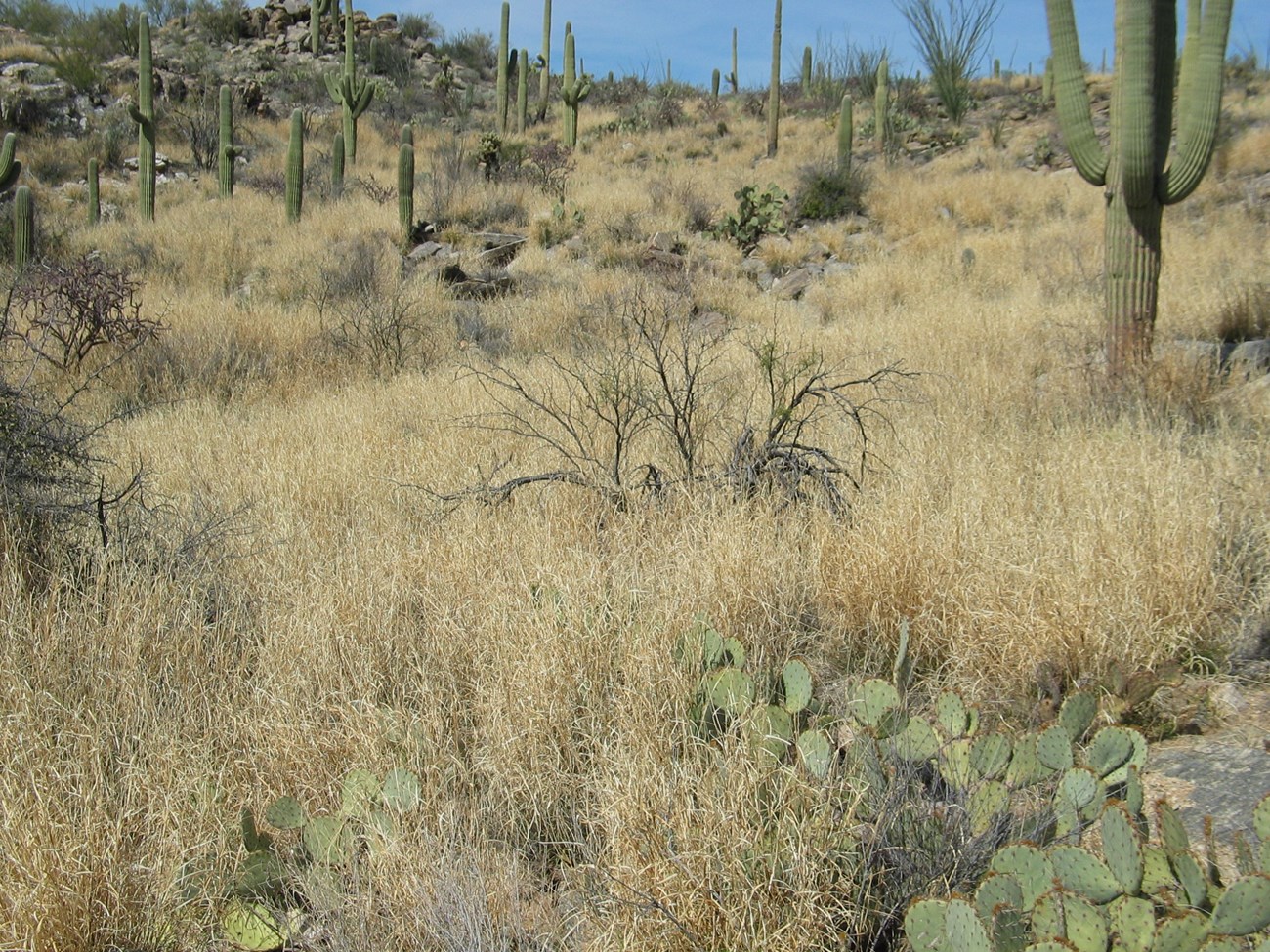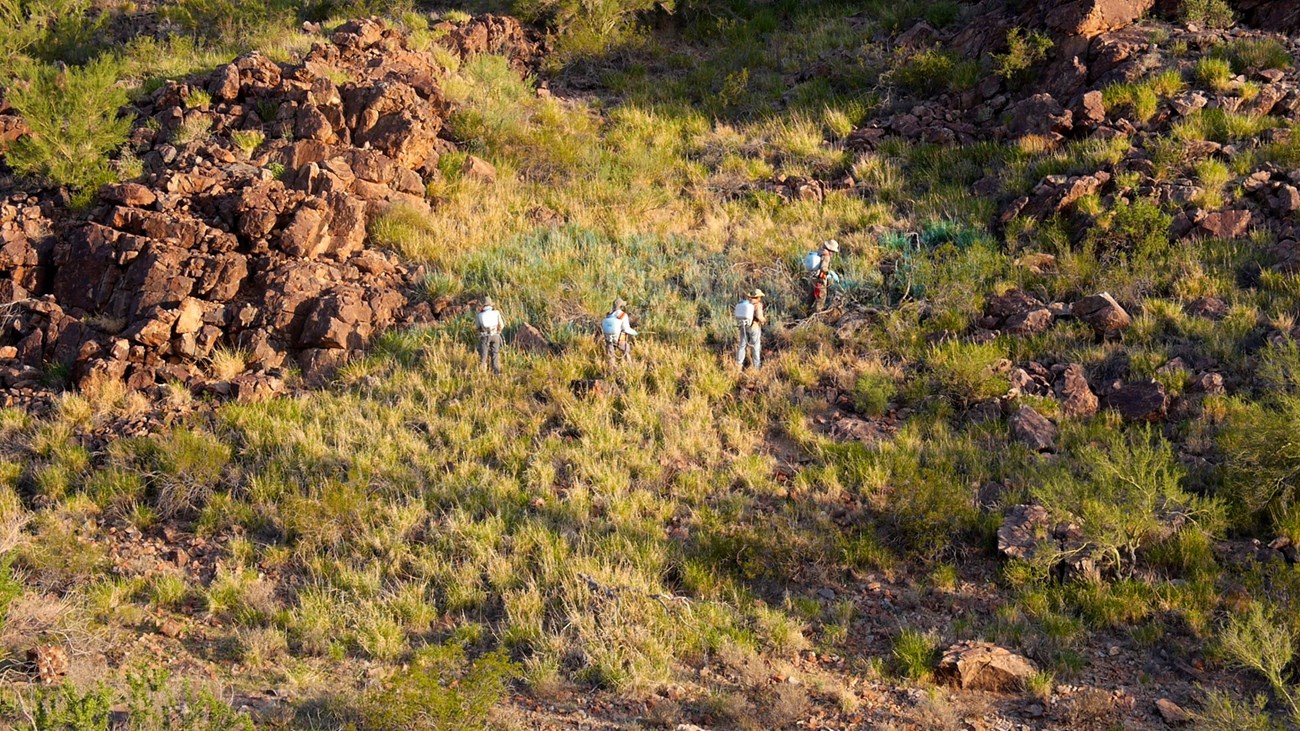|
Contact: John Thornburg, 520-733-5130 Tucson,Ariz., June 15, 2015 — For Immediate Release.Saguaro National Park, the Coronado National Forest, and the Southern Arizona Buffelgrass Coordination Center are the recipients of Resilient Landscape Program (RLP) funding from the Department of the Interior to help address the growing buffelgrass problem, which poses a serious threat to the Sonoran Desert and its residents. Scientists David G. Williams and Zdravko Baruch describe buffelgrass as "one of the world's most notorious invaders." Buffelgrass reduces native plant diversity by growing in dense patches, which spread at an exponential rate. Because buffelgrass grows so thickly, it inhibits establishment of new native plants and replaces existing natives. It also creates heavy fuel loads that carry hot and intense fires, for which many native species, such as saguaro and paloverde, have no defense. The fires that buffelgrass feed also threaten homes, infrastructure, and private property.
With its sparse plant life, the surrounding desert has been protecting the communities of Pima County from the threat of wildfire. This is changing as buffelgrass spreads further into the desert. With continuous stands of buffelgrass, wildfires starting in surrounding mountains will be able to move downhill. In addition, because bufelgrass is creating fuel for fires where previously there has been none, it is anticipated that the number of human-caused fires in urban areas will increase, and these fires will be able to run uphill into surrounding mountains. More, larger, and hotter burning fires mean that firefighting could become significantly more difficult, costly, and dangerous if buffelgrass fills in the desert.
Ensuring resilient landscapes and fire-adapted communities depends on the implementation of a broad-based,, collaborative, and cohesive strategy to better address the mounting challenges of escalating fire behavior, increased risk to people, greater home and property losses, and increased threats to communities.
This project crosses agency boundaries to address the issue of buffelgrass. Partners in the project include Saguaro National Park, Coronado National Forest-Santa Catalina Ranger District, the Southern Arizona Buffelgrass Coordination Center , Buenos Aires National Wildlife Refuge, Pima County, and the United States Geological Survey.
The project will protect native plant and animal communities from being displaced by buffelgrass. It will help prevent large, intense wildfires from converting biologically rich, fire-sensitive habitat into a near-monoculture of highly flammable grassland. Project funds will help prevent damage to private property, utility corridors, and to the area's tourism-based economy. In addition, this project will aid managers of higher elevation, fire-adapted and fire-dependent ecosystems to manage wildfires to maintain the ecological integrity and resilience of those ecosystems and to protect forest health.
For more information about the integrated management approach to control buffelgrass in Southern Arizona, please visit www.buffelgrass.org or https://www.nps.gov/sagu/learn/nature/invasive-plants.htm.

NPS photo 
NPS photo |
Last updated: June 16, 2015
